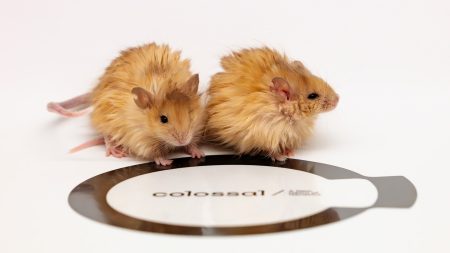Is My Red Your Red? The Science of Color Perception
In the dimly lit corners of college dorms worldwide, a philosophical question often emerges during late-night conversations: “Is my perception of the color red the same as yours?” This seemingly simple inquiry has puzzled philosophers for centuries, touching on fundamental questions about consciousness and subjective experience. Recently, two neuroscientists, Andreas Bartels of the University of Tübingen and Michael Bannert of the Max Planck Institute for Biological Cybernetics in Germany, have brought scientific evidence to bear on this age-old question. Their research, published in the Journal of Neuroscience, suggests that while our brains may process colors in remarkably similar ways, the subjective experience of color remains a fascinating mystery.
The researchers began with two competing hypotheses about how our brains perceive color. The first possibility was that each person’s brain might have its own unique, “snowflake-like” pattern of neural activity when perceiving colors—suggesting that my experience of red could indeed be completely different from yours. The second possibility was that color perception might trigger standardized brain activity patterns that remain relatively consistent across different individuals. To test these hypotheses, Bartels and Bannert monitored neural activity across the visual brain regions of 15 participants as they viewed various shades of red, green, and yellow. They then attempted to predict what color a person was looking at based solely on their brain activity patterns, creating a kind of neural “fingerprint” for different color perceptions.
Their findings strongly supported the second hypothesis: there appear to be significant commonalities in how our brains process color information. The neural reactions to specific colors followed predictable patterns that didn’t vary substantially from person to person. This suggests that at the neuroanatomical level, color perception is remarkably consistent across individuals. When you and I look at a red apple, the physical processes occurring in our visual cortex are likely quite similar. The research team was able to use these neural patterns to accurately predict which color a participant was viewing, indicating that our brains process color information in standardized ways that transcend individual differences.
However, Bartels is quick to point out that these findings don’t completely resolve the philosophical question that inspired their research. While the neural machinery for processing color appears to be standard-issue across human brains, this doesn’t necessarily mean that the subjective experience—what philosophers call “qualia”—is identical. The gap between measurable brain activity and subjective inner experience represents one of the most profound challenges in consciousness research, often referred to as the “hard problem of consciousness.” Even if two people have identical neural activity when viewing the color red, we still cannot definitively say whether their subjective experiences are the same. Perhaps your red feels like what my blue feels like, despite our brains processing the visual information similarly.
This research illuminates the fascinating intersection between neuroscience and philosophy, showing how empirical methods can inform age-old philosophical questions without necessarily resolving them completely. The study demonstrates that our visual systems share remarkable similarities in how they process color information, which makes sense from an evolutionary perspective. Humans evolved in the same environments, facing similar selective pressures that shaped our visual systems to detect and discriminate colors in ways that enhanced survival and reproduction. This may explain why our neural responses to colors show such consistency across individuals, even if the subjective experience of those colors remains private and potentially variable.
The implications of this research extend beyond the philosophical realm. Understanding the commonalities in color perception across individuals has practical applications in fields ranging from art and design to marketing and virtual reality. For instance, knowing that certain neural patterns are consistently associated with specific color perceptions could help develop more effective visual technologies or treatments for color vision deficiencies. Yet, the study also reminds us of the limitations of neuroscience in addressing questions of subjective experience. As Laura Sanders, a neuroscience writer with a Ph.D. in molecular biology from the University of Southern California, might observe, the hard problem of consciousness—how physical brain processes give rise to subjective experiences—remains one of the most profound mysteries in science. The late-night dorm room debates about whether “my red is your red” will likely continue, but now with a deeper understanding of both what we know and what remains to be discovered about the fascinating relationship between our brains and our experience of color.















